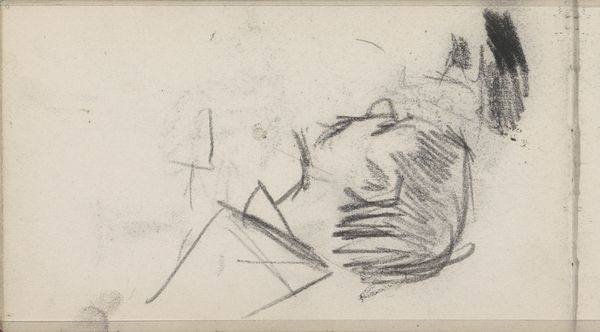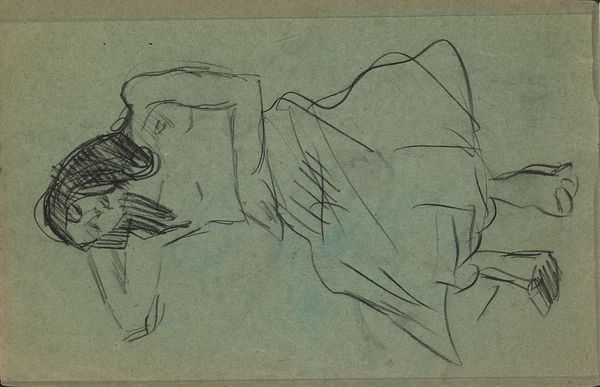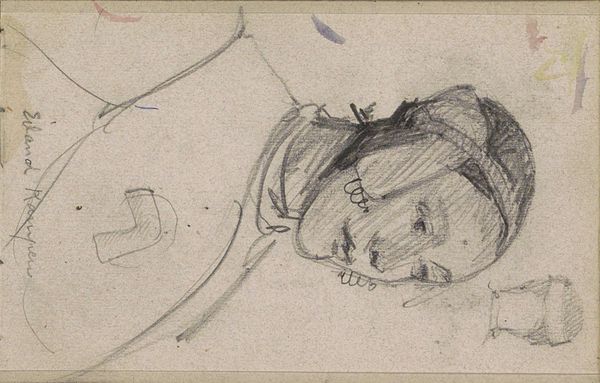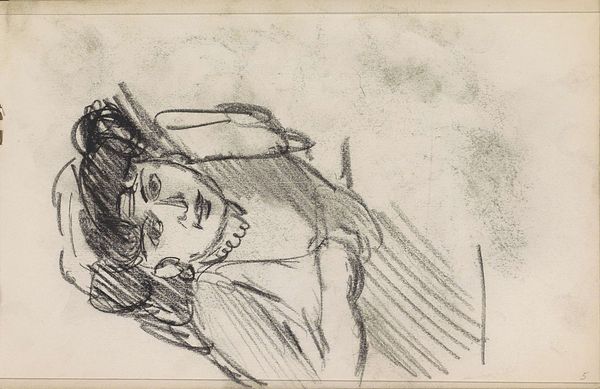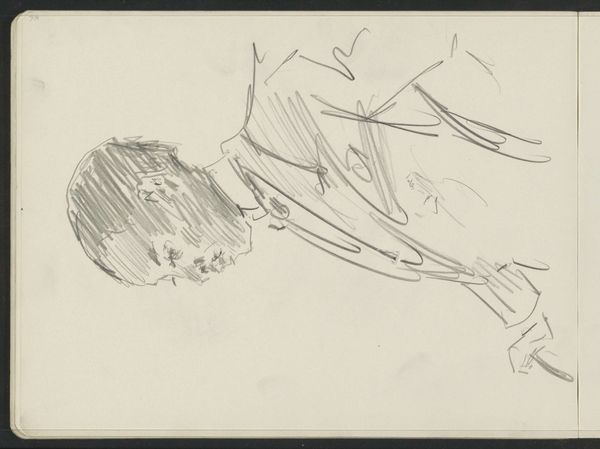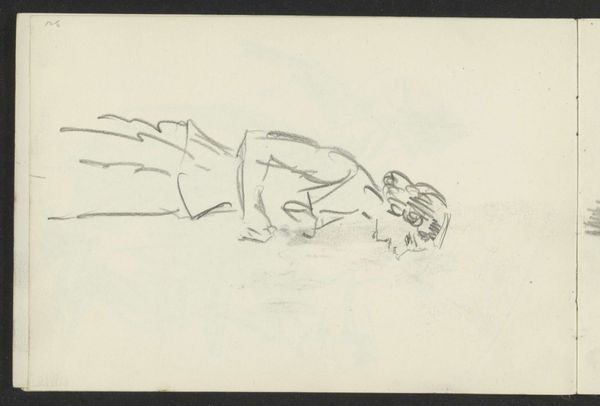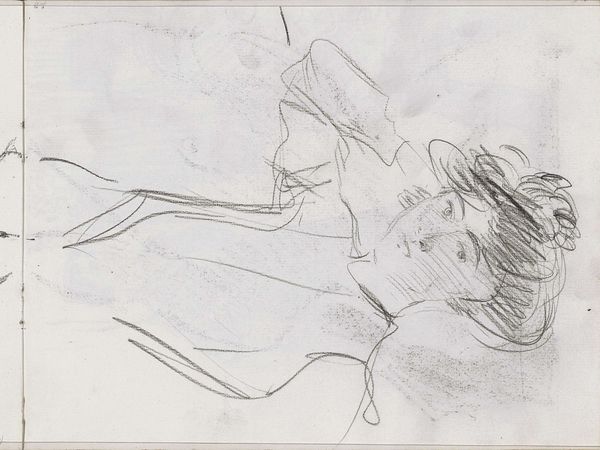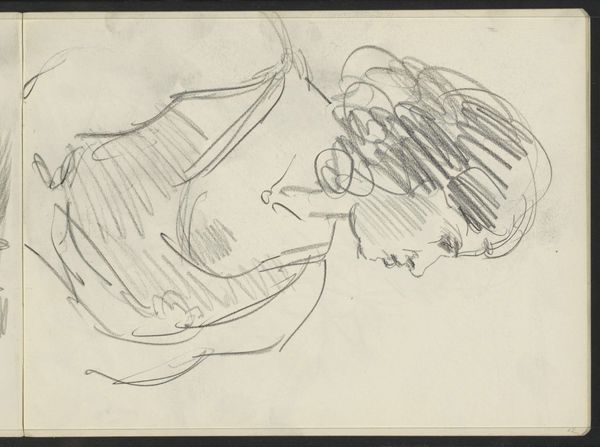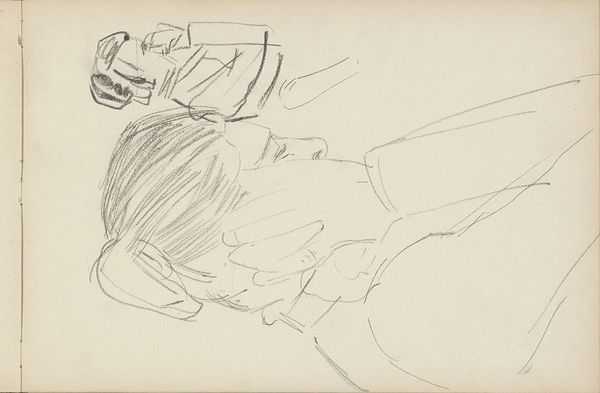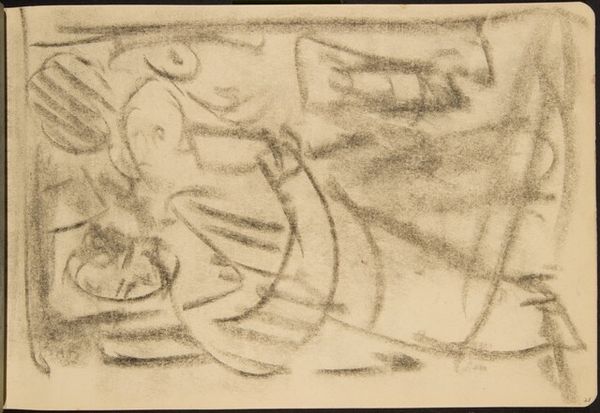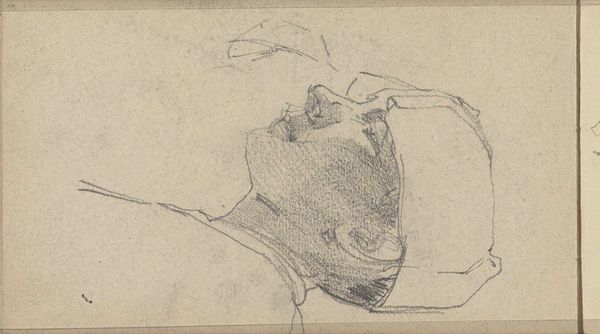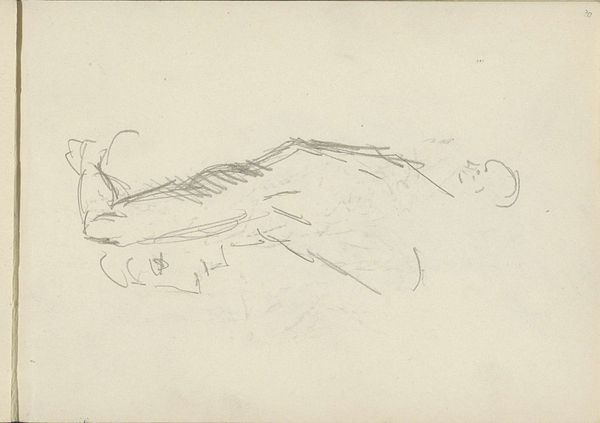
drawing, charcoal
#
portrait
#
drawing
#
charcoal
#
realism
Copyright: Rijks Museum: Open Domain
Curator: It's incredible how much emotional weight can be carried in a few lines, isn't it? Take this charcoal drawing by Isaac Israels, titled "Standing and Seated Woman." The quick, almost frantic strokes capture a certain mood. Editor: Definitely. My first impression is melancholy. The figures seem… heavy. There's a weariness in the posture of the seated woman, and even the standing figure is draped in shadows, burdened by something. Curator: Israels made this sketch sometime between 1886 and 1903. The realism is evident, yet it goes beyond simple representation. The woman standing—do you notice the quick flicks defining her silhouette? Her form and posture convey her presence as a timeless symbolic mother figure in that cultural space. Editor: Absolutely, but is she powerful? Are we looking at the working class, at women whose voices aren't historically heard? Or has she also fallen victim to the circumstances, bearing the weight of a patriarchal and imperial culture? I see quiet suffering, almost suppressed rage. It feels incredibly raw for a work over a century old. Curator: Consider how Israels chose to use charcoal; the starkness creates an atmosphere ripe with symbolic power. Note how both women are defined by stark, deliberate marks; yet, the lines allow room for imagination. These dark lines function almost like negative space. It adds a ghostliness that is very memorable. Editor: Yes, the materiality lends itself perfectly to that sensation of suppressed emotion. Charcoal also implies impermanence, fragility—like lives easily erased or forgotten, like history easily rewritten. So it seems. Curator: Perhaps. Looking at "Standing and Seated Woman," the drawing makes us aware that images do hold so much power and nuance, particularly concerning these unseen realities of social inequality and hidden personal struggle. Editor: Indeed. And art serves as a reminder that we must never stop seeking those stories or questioning who controls their interpretation. We owe it to figures in the frame who look silently but expressively back at us.
Comments
No comments
Be the first to comment and join the conversation on the ultimate creative platform.

